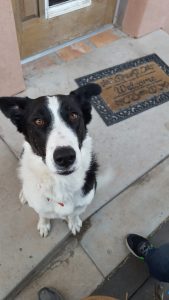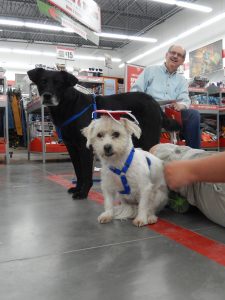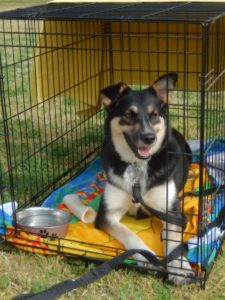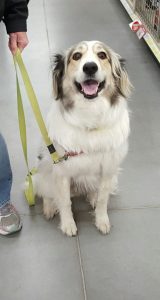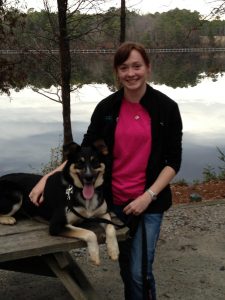Do you know what type of pet care certification the staff at your daycare facility has obtained? What about your pet sitter? You likely checked into the proper certifications for your child care provider, or those folks who care for your elderly parents. And people often ask pet care providers about being insured and bonded, but seldom about the knowledge and best practices of people who care for our pets—our beloved, furry family members.
Many people don’t realize that several years went by—and many, many new pet care facilities were established during this time–in which the only animal care certifications available for our industry were simply pieces of paper you bought on the internet. Nowadays, thanks to organizations such as the IBPSA and PACCC, and companies such as PetTech and The Dog Gurus, real training and actual certifcations are available, by means of real courses and testing centers.
And yet, there are still many facilities today that don’t bother to obtain them.
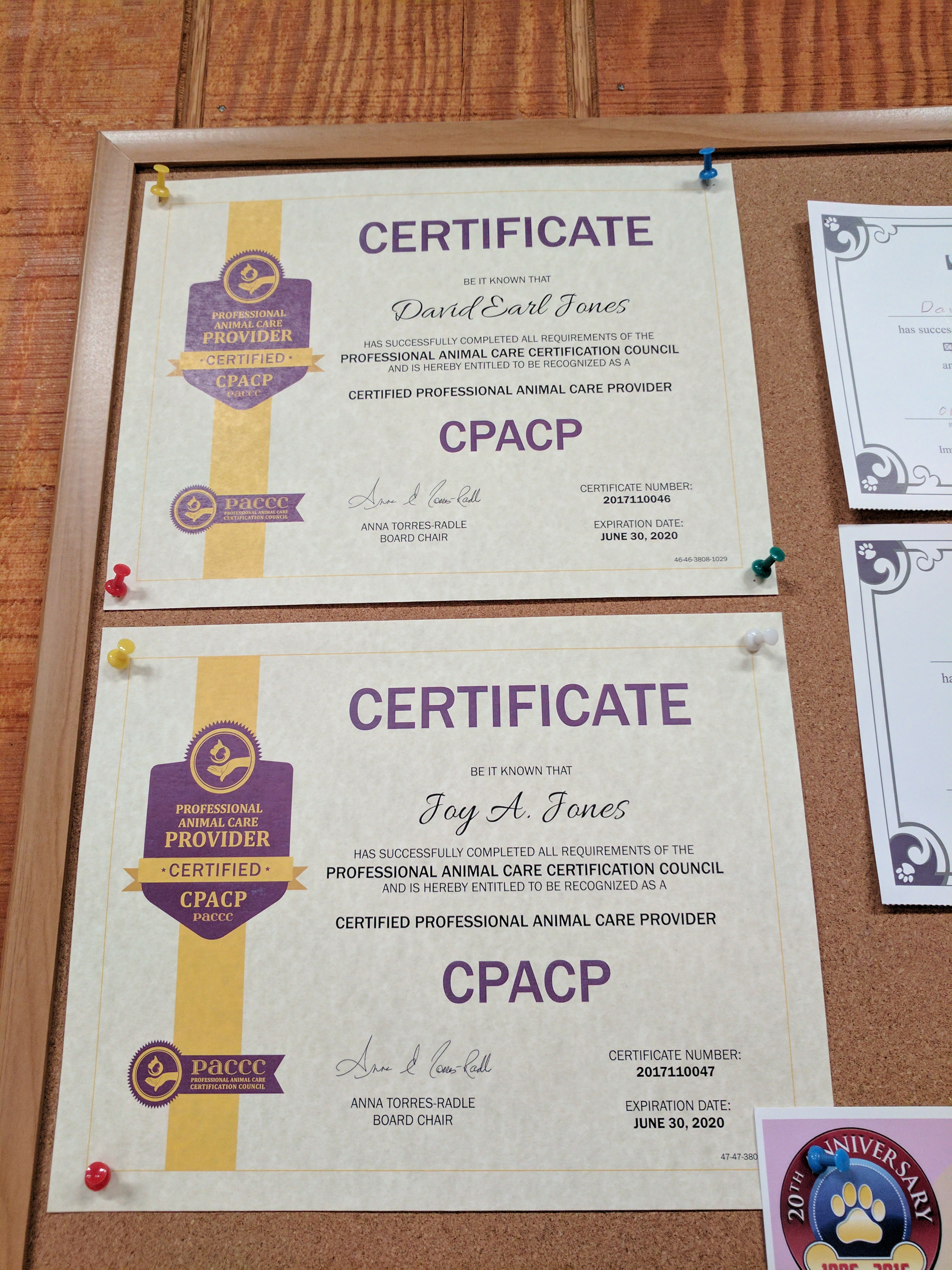
Your Pet Space is proud that our owners are the only two people in the state of New Mexico that are Certified Professional Animal Care Providers (CPACPs). In the words of PACCC, we are “members of an elite group of pet care professionals who have successfully demonstrated comprehensive pet care knowledge and passion for pet safety”.
The Professional Animal Care Certification Council (PACCC) recently conducted an independent certification exam locally for pet care providers. The exam content was created by a team of industry expert volunteers under the guidance of the Professional Testing Corporation (PTC), the third-party testing organization that administered the exam and certified the results.
To initially qualify to take the CPACP exam, Dave and I had to meet minimum education requirements, have a minimum of 500 hours of experience, and provide letters of reference from veterinarians and other pet care industry professionals, as well as some of our clients. The in-depth 125-question examination covered animal care topics including health, nutrition, dog fight and bite protocol, on-leash and off-leash interaction, sanitation, dog behavior and temperament, dog body language, dog training, animal and handler safety, vaccination protocol, workflow management, pathogen control, emergency and quarantine protocols, air quality standards, staff management expectations, and much more.
Our PACCC certification is only a part of what Your Pet Space will be doing to create a growing team of independently certified pet care professionals. We look forward to the next opportunity so our staff can sit for their initial exam, and Dave and I for the next level. We are so proud to be able to demonstrate through PACCC’s independent certification our dedication to pet safety for our clients and community. Pets are family members, and their ‘parents’ should feel confident they are receiving the highest level of care.
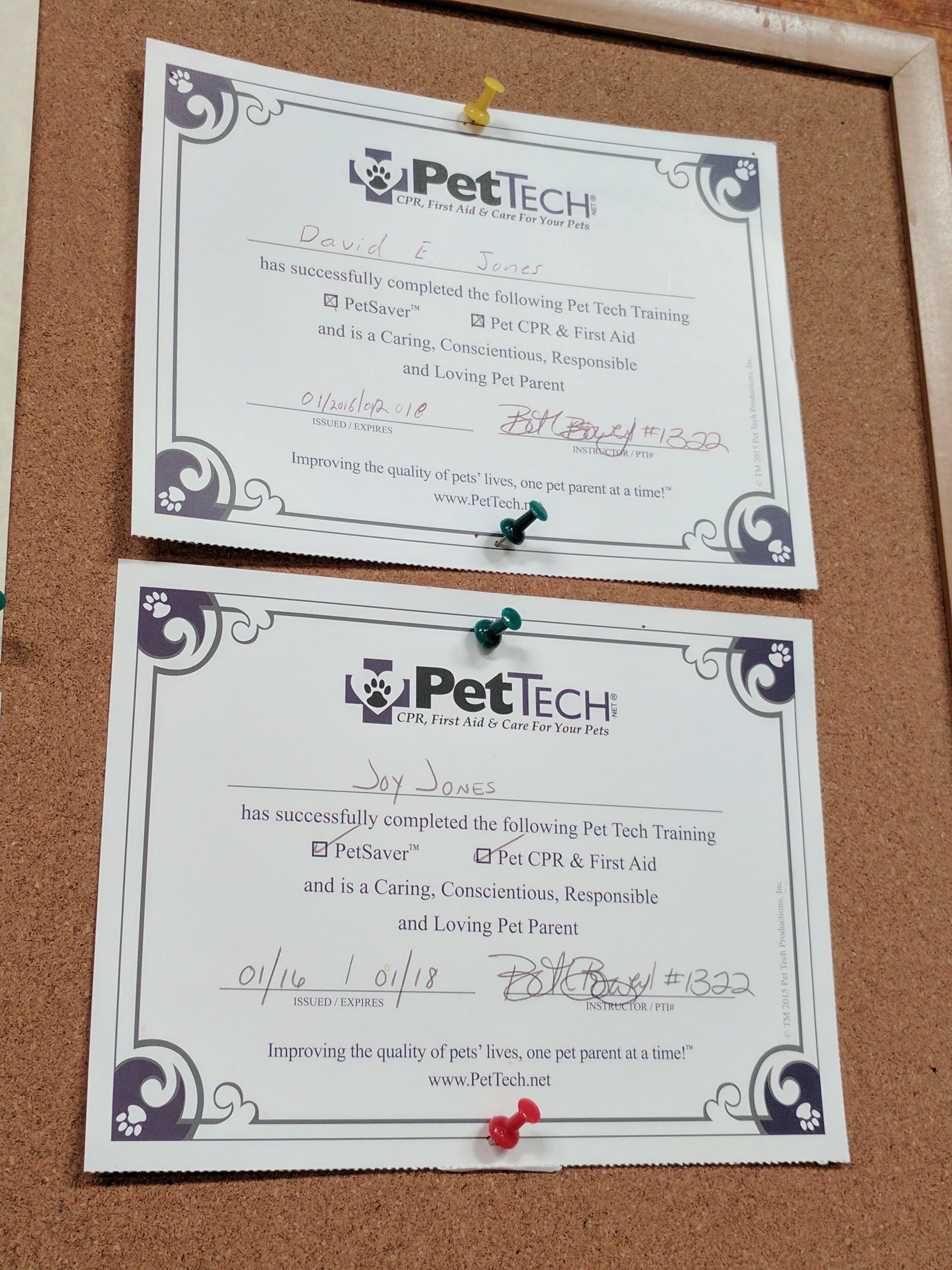
In addition to our PACCC certifications, all but our very newest staff have trained with an instructor in pet First Aid and CPR via PetTech. We rarely have to use any of our first aid skills, and it would be super rare to need to use our CPR knowledge—but we have it…just in case.
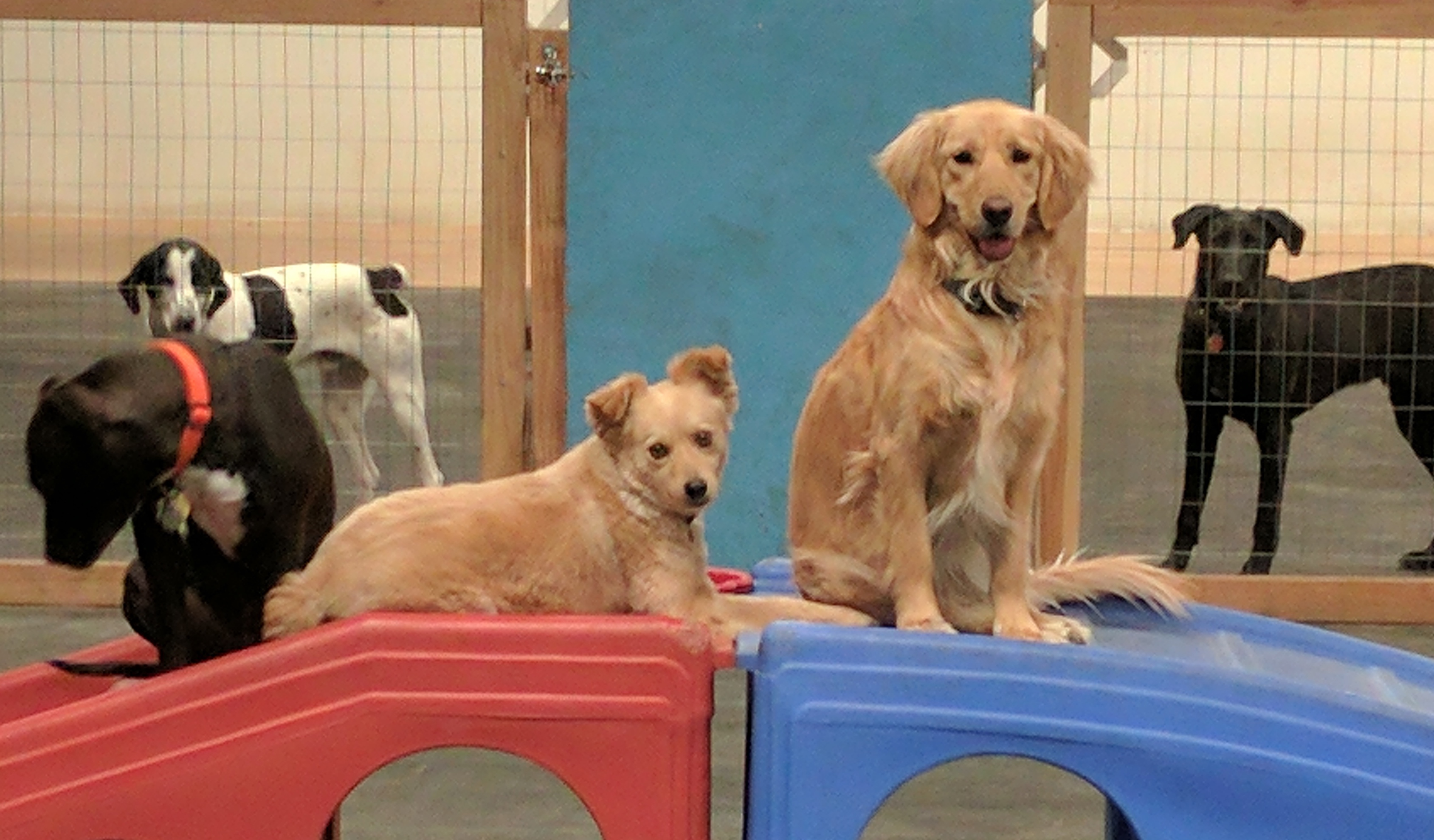
Xena, Garrett and Marley relax in our Super Nova module, while Morgan and Finn are in the Space Cadet and Shooting Star areas.
What Are Best Practices For Daycare/Boarding Facilities?
1.) Assessment of all new dogs (and periodic re-assessment). Contrary to what some facility owners believe, not all dogs are suited for or enjoy daycare. Our Assessments inform us at the outset of a dog’s tolerance for the stress of new situations, who his best playmates are, and what type of play is suitable for him. The initial Assessment Day teaches the dog that Your Pet Space is a safe place to play, even with new dogs and people, and that Mom and Dad always return, whenever they come to see us.
2.) Appropriate dog playgroups for size and age. Inside, Your Pet Space offers a small dog play area called The Tribble Zone, a senior dog area: The Milky Way, a puppy play area for our Space Cadets, a Shooting Star area for jumping dogs and the Super Nova module for larger, active dogs with a chasing playstyle. On the exterior, we have the large outside yard, The Mesosphere, and a smaller dog area called The Stratosphere. Most important: There are never more than 10 dogs in a single playgroup.
3.) Appropriate staff to dog ratio. We ask our clients to try to either call to schedule the day before their dog is coming, or schedule on a recurring basis (the same days each week) so that we can ensure we have an adequate number of staff inside to safely supervise the dogs. Proper certification educates facility owners to allow for 1 person for every 10 dogs, on average. Sometimes, we provide even more staff, if we have a day with very active groups.

4.) Proper knowledge of dog body language. In any facility, the staff on site must be able to head off behavioral issues (fights and bites) before they occur. This is accomplished by understanding of the body language dogs routinely display while playing, when they’re stressed, and especially when there is about to be an altercation. A daycare facility is not like your average dog park, where unknown dogs are turned out into an area together without assessment, division of sizes/ages, proper supervision and little or no knowledge of how dogs signal their intentions to one another. In this sort of situation, dogs are often expected to “work it out” on their own—resulting in a fight. Certification ensures that almost all of the time, this will not happen with us.
5.) Proper knowledge of pet health and safety. In order to gain CPACP status, Dave and I were required to understand how to inhibit transmission of zoonotic and vector borne disease as well as parasites within our facility, as well as demonstrate our knowledge of proper sanitation procedures on a day to day basis. Also, there was a testing section devoted expressly to the safety of and escape plan for pets and staff within our facility due to an emergency.
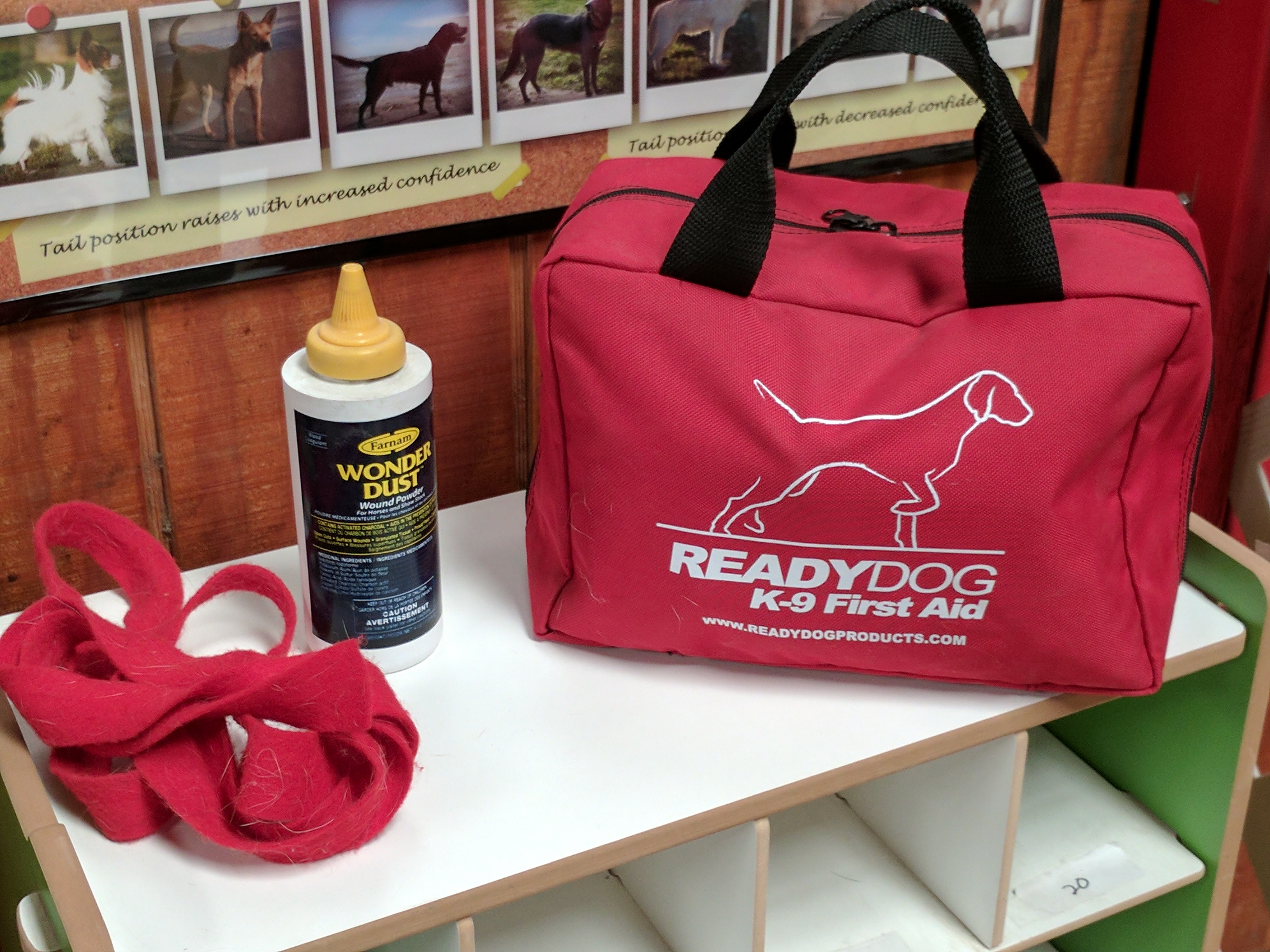
Questions To Ask Yourself
In closing this article, I’d like to speak directly to that person reading this and thinking, “Well, I’ve taken my dog(s) to the same place for years and there has never been a problem. Besides, it’s closer/cheaper/hours are better.”
Let me ask you this: How many incidents at an uncertified facility are ok? How bad do they have to be before they’re a concern for you? Would you rather pay a certified pet care provider or pay the vet when your pet is hurt or becomes ill?
If you live near Your Pet Space in Las Cruces, know that we do provide transport, home care for all types of pets, and offer many discounts for our services. We will even work with you on drop off and pickup times.
So make sure your pet is safer….in a PACCC.
For more information about PACCC and independent certification, visit www.paccert.org.

Joy Jones, Publisher, is also the Vice President of Your Pet Space, a cage free dog boarding facility serving the greater Las Cruces, NM area. Her urban fiction book Indigo was recently published. When not working at Your Pet Space, she writes a metaphysical column, as well as humor. You can e-mail her at joy@yourpetspace.info or follow Your Pet Space on Facebook.


